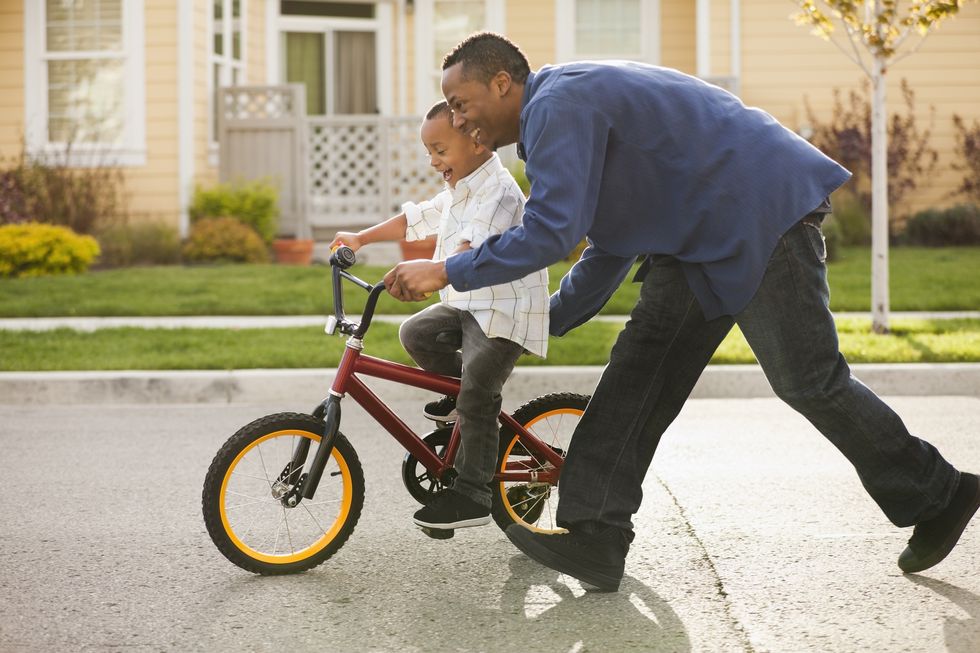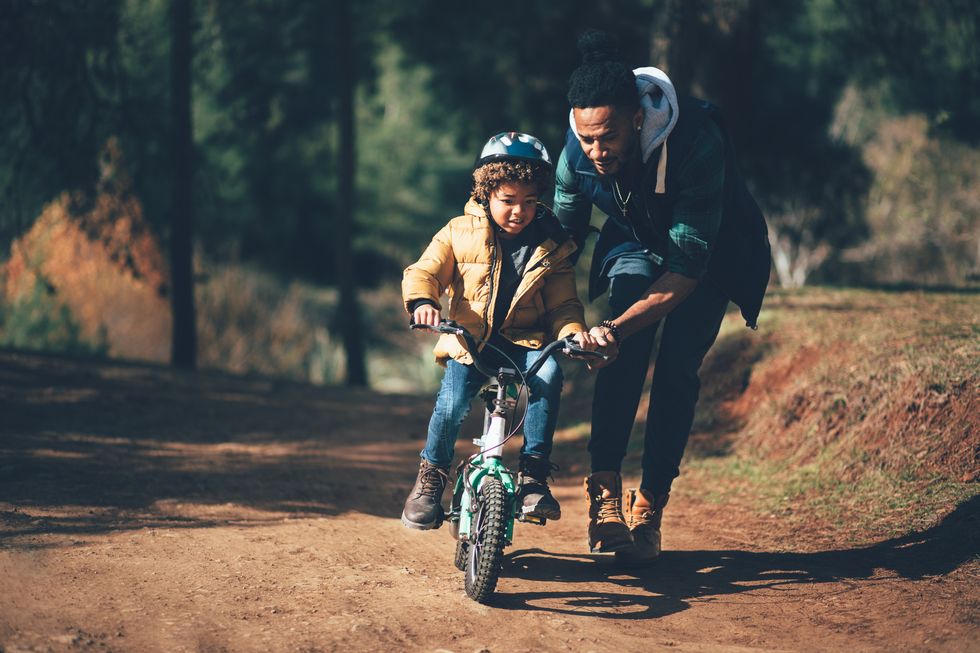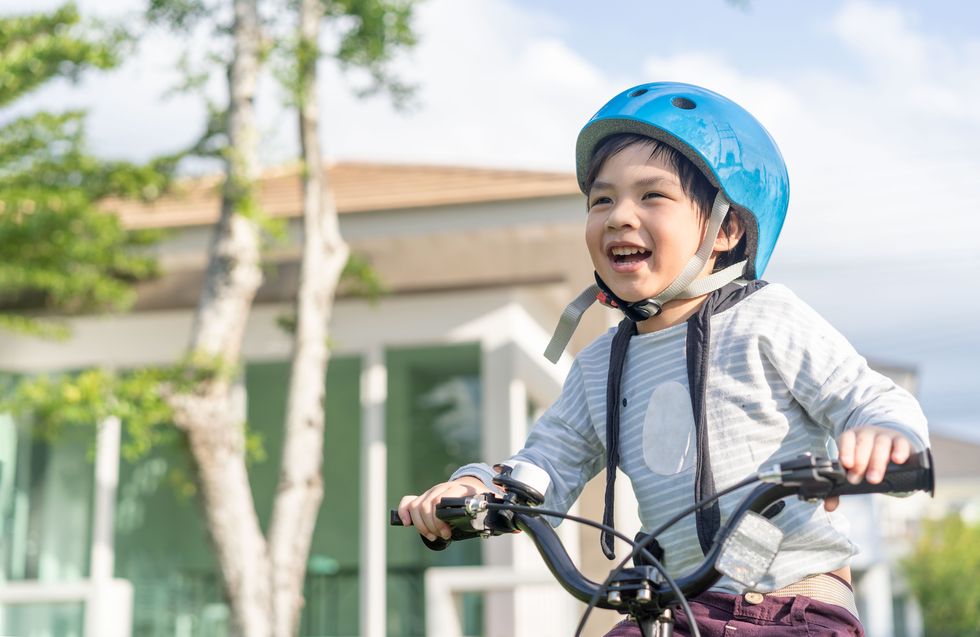Discover How To Teach A Kid To Ride A Bike accurately. Learn why height is the key measurement for finding the right-sized bike and understand the relationship between tire sizes and height ranges. Find the perfect fit for your child and ensure their comfort and safety while riding. Get expert tips and guidelines in this comprehensive guide.
Learning to ride a bike is an exciting milestone for any child. Teach a child to ride a bike provides child with a sense of independence and opens up a whole new world of adventure. However, teaching a kid to ride a bike can be a challenging task. With the right approach and guidance, parents can help their children master this skill and create lasting memories. In this article, we will explore a step-by-step guide on how to teach a kid to ride a bike successfully.
Step-by-step guide on how to teach a kid to ride a bike

Choosing the Right Bike and Safety Gear
Before starting the bike riding journey, it is crucial to select the right bike and safety gear for your child. Choose a bike that is the appropriate size for their age and height. Opt for training wheels or a balance bike for beginners to provide additional stability. Ensure that the bike is in good condition, with properly inflated tires and functioning brakes.
Additionally, safety gear is essential to protect your child from potential injuries. Make sure your child wears a well-fitted helmet, knee pads, and elbow pads. Encourage them to wear closed-toe shoes and avoid loose clothing that may get caught in the bike’s mechanisms.
Preparing for the First Ride
Before the first ride, find a safe and spacious area away from traffic where your child can practice. A flat, smooth surface such as a park or an empty parking lot is ideal. Ensure there are no obstacles or hazards in the vicinity.
Start by introducing the bike to your child and explaining its different parts. Teach them how to hold the handlebars and how to use the brakes. Demonstrate proper body positioning, with a slight bend in the knees and elbows. Encourage them to maintain a straight line of sight while riding.
Teaching Balance and Coordination
Balance is a fundamental skill when it comes to bike riding. Begin by removing the training wheels or using a balance bike. Have your child straddle the bike with both feet flat on the ground. Instruct them to walk or scoot forward, gradually lifting their feet off the ground and finding their balance. This helps them develop a sense of equilibrium and control.
As your child gains confidence in balancing, introduce them to gliding. Encourage them to push off with their feet and glide for short distances, focusing on maintaining balance. Repeat this practice until they can glide smoothly and comfortably.
Learning to Pedal
Once your child has mastered balance and coordination, it’s time to introduce pedaling. Start by positioning the pedals parallel to the ground. Instruct your child to place one foot on a pedal and use the other foot to push off the ground for momentum. As they gain speed, guide them to place the second foot on the other pedal and start pedaling.
Initially, your child might find it challenging to coordinate pedaling and steering simultaneously. Encourage them to practice in a straight line until they feel comfortable. Gradually introduce turning and maneuvering, emphasizing the importance of looking in the direction they want to go.
Practicing Braking and Steering
Teach your child how to use the brakes effectively. Explain the different types of brakes on their bike and demonstrate how to apply them gently. Encourage them to practice braking in a controlled manner, gradually increasing their confidence and skill.
To enhance their steering abilities, set up simple obstacle courses or markers they can navigate around. This helps them develop spatial awareness and control over their bike. Practice different turning techniques such as wide turns, sharp turns, and U-turns.
Building Confidence and Gradual Progression
Every child learns at their own pace, so it’s essential to be patient and supportive throughout the learning process. Celebrate their achievements, no matter how small, and provide constructive feedback to help them improve. Gradually increase the difficulty level by introducing hills or riding on different terrains.
Encourage your child to set goals and challenge themselves. For example, they can aim to ride a certain distance or achieve a specific maneuver. With time and practice, their confidence will grow, and they will become more proficient in bike riding.
Encouragement and Positive Reinforcement
Positive reinforcement plays a vital role in motivating children to learn and improve their bike riding skills. Praise their efforts, resilience, and progress. Offer words of encouragement and assure them that mistakes are a part of the learning process. Celebrate their achievements and provide rewards when they reach significant milestones.
Common Challenges and Troubleshooting
During the bike riding journey, you may encounter some common challenges. For instance, fear of falling, lack of confidence, or difficulty in maintaining balance. Address these challenges by creating a supportive environment and breaking down the learning process into smaller, manageable steps. Be empathetic and understanding, and allow your child to take breaks when needed.
Determining the Appropriate Bike Size
Once you have your child’s height measurement, you can refer to the recommended bike size based on tire diameter. Here are the general guidelines for matching tire sizes with height ranges:
- 12″ tires: Generally suitable for children between 28″ and 38″ tall.
- 14″ tires: Generally suitable for children between 36″ and 40″ tall.
- 16″ tires: Generally suitable for children between 38″ and 48″ tall.
- 18″ tires: Generally suitable for children between 42″ and 52″ tall.
- 20″ tires: Generally suitable for children between 48″ and 60″ tall.
- 24″ tires: Generally suitable for children between 56″ and 66″ tall.
- 26″ tires: Generally suitable for children 60″ tall and above.
These ranges provide a starting point for selecting the appropriate bike size, ensuring a comfortable and safe riding experience for your child.
Related Article: Mountain Bike Frame Size Chart

Understanding Tire Sizes and Height Ranges
It’s important to note that different tire sizes correspond to specific height ranges. The diameter of the bike’s wheels determines the tire size. Smaller tire sizes, such as 12″ and 14″, are suitable for younger children, while larger tire sizes, like 24″ and 26″, are typically used by older children and adults.
Tips for Teaching Your Child To Ride a Bike
| Tip | Explanation |
|---|---|
| Choose the right bike and equipment | Ensure the bike is the appropriate size for your child. Use a helmet, knee pads, and elbow pads for safety. |
| Find a safe and open practice area | Look for a flat, spacious area with no traffic where your child can practice riding without any obstacles or distractions. |
| Start with balance and coordination | Help your child develop balance and coordination by having them walk the bike and practice gliding with their feet off the ground. |
| Teach proper riding posture | Teach your child to sit upright, look forward, and hold the handlebars with a relaxed grip. |
| Demonstrate pedaling and braking | Show your child how to pedal smoothly and how to use the brakes correctly. Encourage them to practice stopping safely. |
| Use training wheels or a balance bike | Consider using training wheels or a balance bike to help your child gradually build confidence and develop their balance. |
| Provide continuous support and encouragement | Be patient and offer encouragement throughout the learning process. Celebrate small achievements to boost confidence. |
Conclusion
Teaching a kid to ride a bike requires patience, guidance, and a supportive approach. By following the steps outlined in this article, parents can help their children develop the necessary skills and confidence to ride a bike independently. Remember to create a positive and encouraging atmosphere throughout the learning process, and celebrate the joy of achieving this significant milestone together.
FAQs
Q: At what age should I start teaching my child to ride a bike?
A: The ideal age to start teaching a child to ride a bike is between 3 and 6 years old, depending on their physical and cognitive development.
Q: Should I use training wheels or a balance bike?
A: Both options can be effective, but balance bikes are often recommended as they help children develop balance and coordination naturally.
Q: How long does it take for a child to learn to ride a bike?
A: Every child learns at their own pace, but with consistent practice, most children can learn to ride a bike within a few weeks or months.
Q: What if my child is afraid of falling?
A: Fear of falling is common. Start with a balance bike or training wheels to build their confidence gradually. Provide emotional support and reassurance.
Q: How can I make bike riding fun for my child?
A: Make bike riding fun by organizing family bike outings, creating obstacle courses, and setting achievable goals. Incorporate games and challenges to keep them engaged and motivated.













